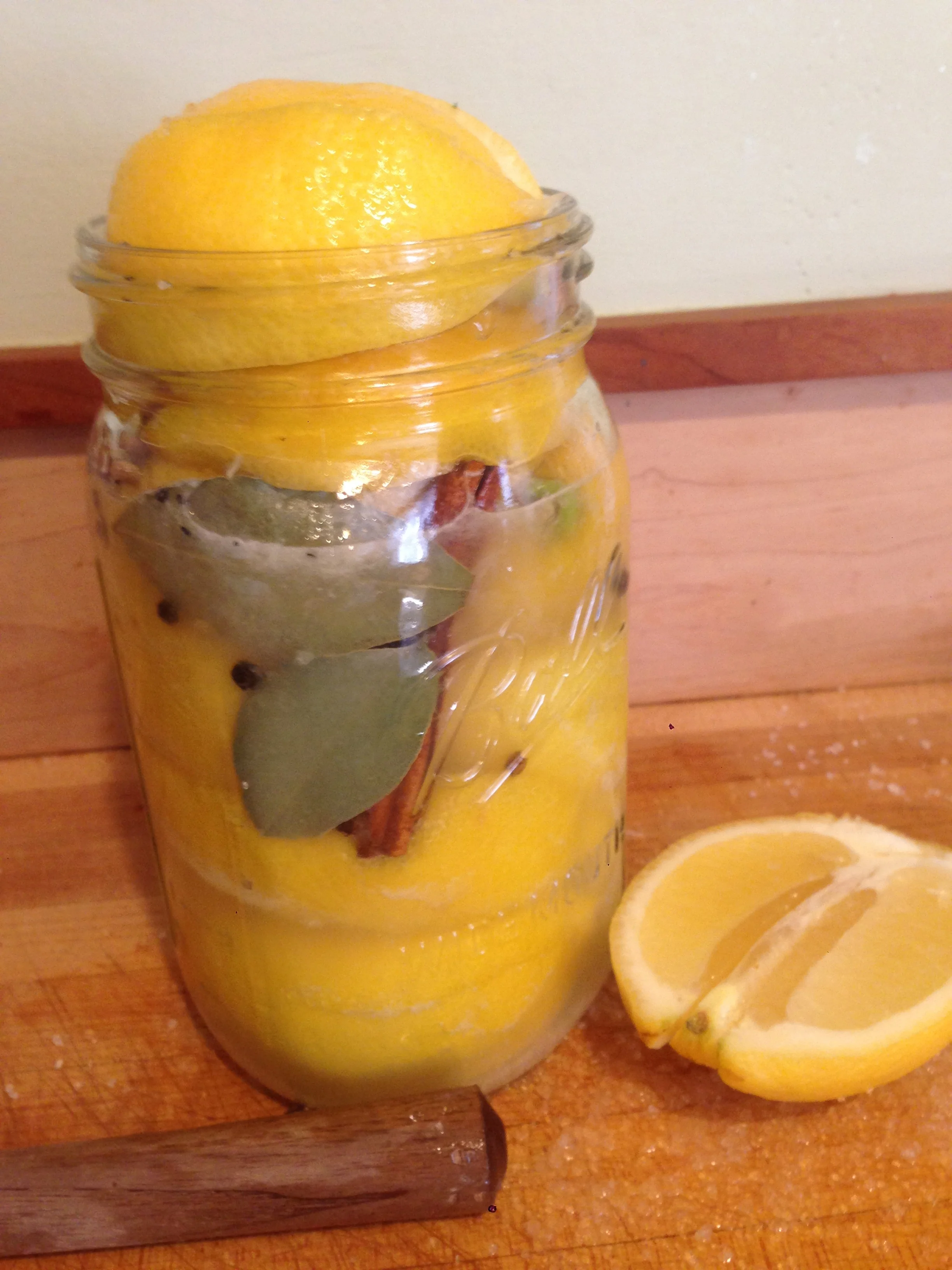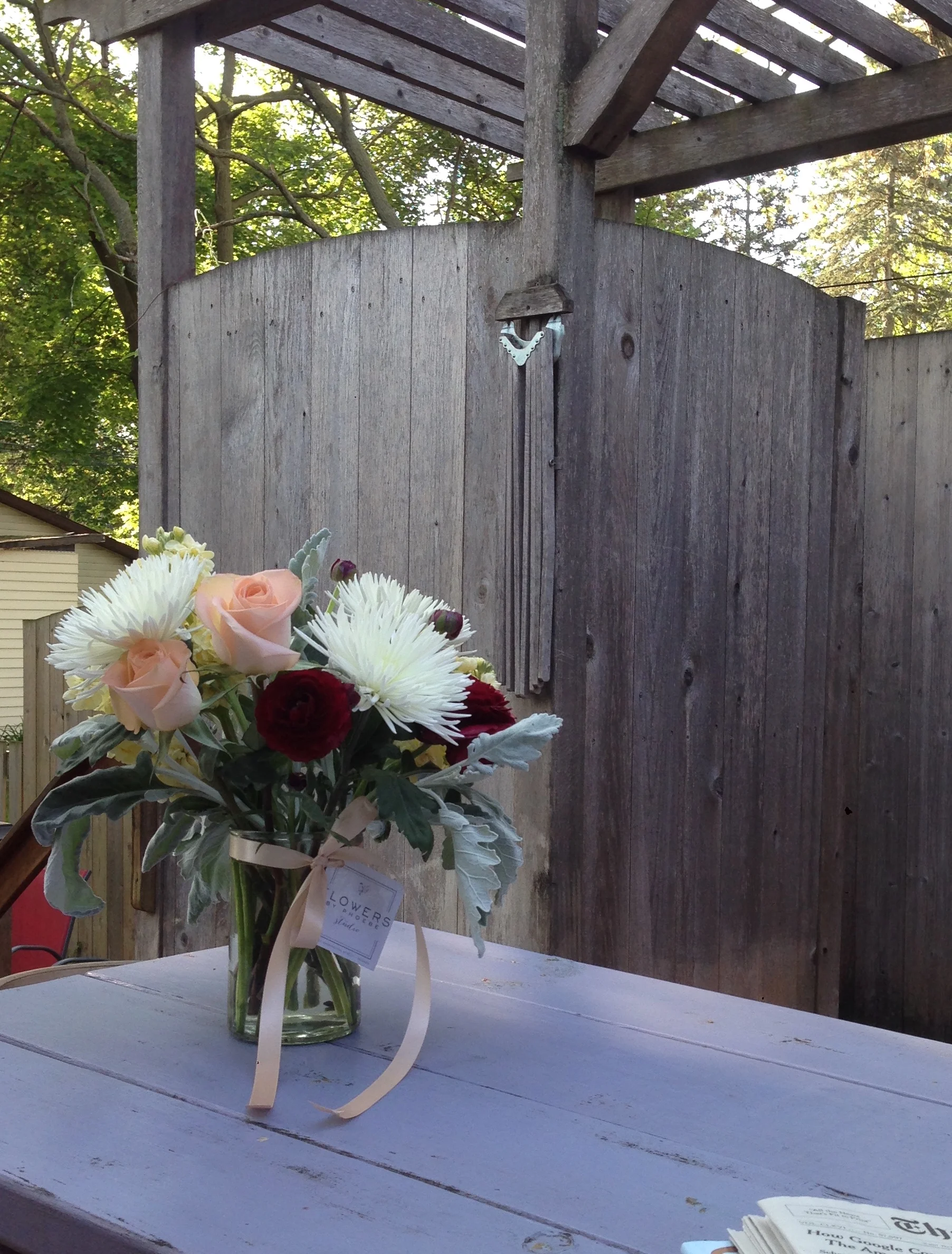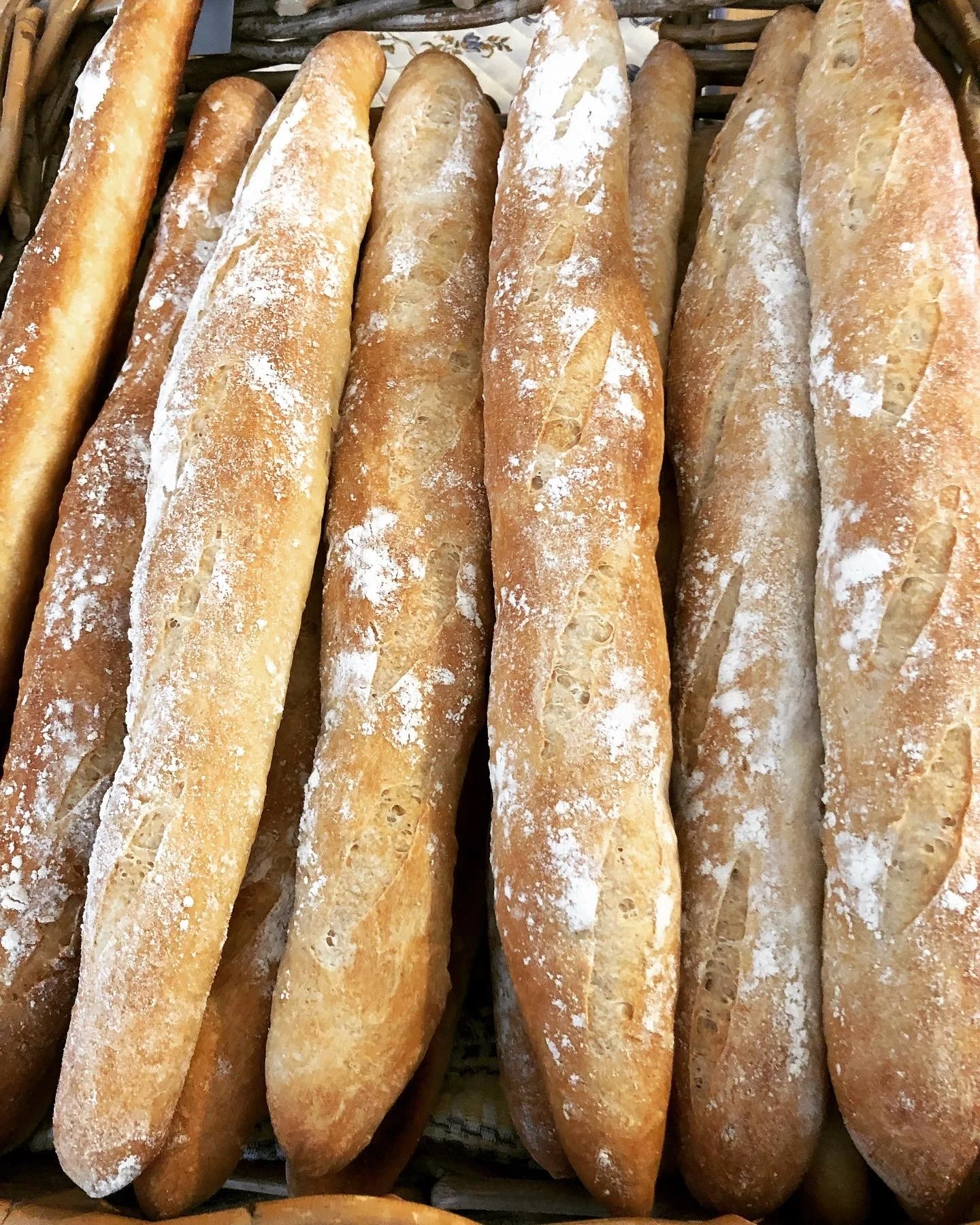Spring Sun and Preserved Lemons
The floor of the forest is covered with a light fuzzy green blanket. Four different varieties of flowers bloom, each with its own shape and color. Birds are singing away, peepers are chiming in and a faint scent of earthiness rises up to my nostrils. Last weekend, as we listened to music at Gateway Winery, Suzanna suggested a toast to spring. Those gathered around our table all lifted their glasses and clinked them and chimed in, “To Spring!”. And here it is, poking into our days with buds and blooms and life.
It’s time to get my hands dirty, to loosen the soil, to plant seeds, to hope for growth. The sun is hot as it shines down on my winter white skin. On the protected deck, it almost feels like summer. I’m hoping for a deck harvest this year, since our backyard is so shaded. But spring also means work. There is brush to clear, sticks to pick up, leaves to gather. There is a house to air, windows to wash, stoops to clean. I am ready for the big outdoors and the bright sunlight to invade every corner of this place and spread out its energy.
Talking about bright and clean, this week, I worked with lemons in the kitchen. I was finally tackling one of last year’s projects, put on the back burner. After numerous stays in southern France, and soaking up the culture, I want to make preserved lemons.
The Provence area is influenced by north Africa, with numerous Moroccan, Algerian and Tunisian immigrants. And the food culture follows along. Preserved lemons are lemons that are soaked in brine and fermented, and the peel is often used to add a nice lemony note to dishes. In an area where lemons grow on trees, it is also a way to preserve them past their harvest date. Preserved lemons are often used in tajines, a slow cooked savory stew often made in a special ceramic dish that allows the food to simmer slowly and yet retain its moisture. I have made them in the past but never had preserved lemons to add for that special brightness of flavor. Someday I hope to have the special dish that is used to make them.
So I purchase some organic lemons, wash them and quarter them and rub them with sea salt. As I slice through the skin, a lemony scent fills the air. I can already imagine how pungent it will be in a month, after the packed jar sits on the counter. When the time comes, I will use the peel chopped finely to add amazing flavor to dishes. For now, I am content with leaving it on my counter to do its work, remembering to turn it once a day. And in a month, I will share a recipe to use with it. I can’t wait!
How to Make Preserved Lemons
1 quart jar, sterilized
5 organic lemons
coarse sea salt
Spices you might add: peppercorns, bay leaves, cinnamon stick, coriander seeds...
Sterilize your jar and lid. Sprinkle 2 T. of salt on the bottom of the jar. Slice the lemons from the top to within a 1/4 inch of the bottom, into fourths or sixths depending on the size of the lemon. Sprinkle salt into all the cuts. Then slowly fill the jar with the lemons, pushing them in firmly as you go. I used a wooden spoodle. As you near the top, you might have to split the lemons to make them fit. As you work, the lemons will start extracting their juice. You want the juice to fill the entire jar and totally cover the lemons. Then add the spices, if you want to. Put the lid on. Keep the jar in a cool, dry spot in your kitchen, where you can see it. This will help you to remember to turn it upside down and back every day. The lemons should be ready to use in about a month.
In a month, I will include a recipe or two in which to use them. Have fun!










